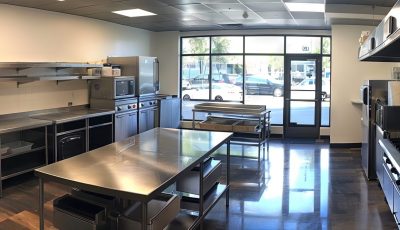Natural Refrigerant Options Explained
The AIM Act of 2020 has put forth some ambitious goals of phasing out hydrofluorocarbon (HFC) refrigerants over the next 10 years. Although there are several natural alternatives that businesses can take advantage of, they all present their own benefits and challenges. Here is everything you need to know about the leading natural refrigeration alternatives:
Carbon dioxide (CO2)
CO2 is increasingly being used as a natural refrigerant in various cooling and refrigeration applications due to its environmental benefits compared to synthetic refrigerants.
Properties of CO2:
- Global Warming Potential (GWP): 1 (CO2 is considered to have zero direct global warming impact over a 100-year period when compared to HFCs and CFCs)
- Ozone Depletion Potential (ODP): 0 (CO2 does not deplete the ozone layer)
Applications:
- Supermarket Refrigeration: CO2 transcritical systems are commonly used in large supermarkets and grocery stores.
- Industrial Cooling: CO2 is used in various industrial cooling applications, including cold storage, food processing, and beverage production.
- Heat Pumps: CO2 heat pumps can be used for both heating and cooling applications in residential, commercial, and industrial settings.
Ammonia (NH3)
Ammonia is one of the oldest and most widely used natural refrigerants. It has been used in various cooling and refrigeration applications for over a century due to its excellent thermodynamic properties and environmental benefits compared to synthetic refrigerants.
Properties of Ammonia:
- Global Warming Potential (GWP): 0 (Ammonia has zero direct global warming impact)
- Ozone Depletion Potential (ODP): 0 (Ammonia does not deplete the ozone layer)
Applications:
- Industrial Refrigeration: Ammonia is widely used in industrial refrigeration applications, including cold storage, food processing, and chemical manufacturing.
- Commercial Refrigeration: Ammonia is used in larger commercial refrigeration systems, such as those in supermarkets and cold storage warehouses.
- Air Conditioning: While less common, ammonia is also used in some large-scale air conditioning systems, especially in industrial and commercial settings.
- Heat Pumps: Ammonia heat pumps can be used for both heating and cooling applications in various sectors.
- is a hydrocarbon refrigerant that is gaining popularity as a natural refrigerant due to its environmental benefits and energy efficiency. It is a member of the alkane family and is commonly used as a fuel and propellant, but its use as a refrigerant is also increasing, especially in smaller-scale refrigeration and air conditioning systems.
Propane (C3H8)
Propane is a hydrocarbon refrigerant that is gaining popularity as a natural refrigerant due to its environmental benefits and energy efficiency. It is a member of the alkane family and is commonly used as a fuel and propellant, but its use as a refrigerant is also increasing, especially in smaller-scale refrigeration and air conditioning systems.
Properties of Propane:
- Global Warming Potential (GWP): 3 (Propane has a very low GWP compared to synthetic refrigerants)
- Ozone Depletion Potential (ODP): 0 (Propane does not deplete the ozone layer)
Applications:
- Domestic Refrigeration and Air Conditioning: Propane is increasingly used in small domestic refrigeration and air conditioning systems, such as refrigerators, freezers, and room air conditioners.
- Commercial Refrigeration: Propane can also be used in some commercial refrigeration applications, particularly in smaller-scale systems.
- Heat Pumps: Propane heat pumps can be used for both heating and cooling applications in residential and commercial settings.
Which Natural Refrigerant Should You Choose for Your Operation?
CO2
CO2 is a promising natural refrigerant that offers significant environmental benefits and energy efficiency advantages over synthetic refrigerants. However, its use requires careful system design, consideration of operating pressures, and specialized components to ensure optimal performance and reliability. As regulations and environmental concerns drive the transition away from synthetic refrigerants, CO2 is expected to play an increasingly important role in the future of refrigeration and cooling technologies.
Advantages of Using CO2 as a Refrigerant:
- Environmental Friendliness: CO2 has a very low GWP and zero ODP, making it environmentally benign compared to synthetic refrigerants.
- Energy Efficiency: CO2 systems can be highly energy-efficient, especially in transcritical cycles.
- Abundance and Cost: CO2 is readily available, cost-effective, and does not require extensive new infrastructure for production or distribution.
Challenges and Considerations:
- Operating Pressures: CO2 operates at much higher pressures than traditional refrigerants, which can require system components to be designed for higher strength and durability.
- System Complexity: CO2 refrigeration systems can be more complex and require sophisticated controls to optimize performance.
- Lubrication: CO2 is not a good lubricant, so special considerations need to be taken into account for system design and component materials.
Ammonia
Ammonia is a highly effective and environmentally friendly natural refrigerant with a long history of use in refrigeration and cooling applications. While it offers numerous advantages in terms of efficiency, cost-effectiveness, and environmental impact, its use requires careful attention to safety, system design, and material compatibility. With proper precautions and management, ammonia can be a reliable and sustainable alternative to synthetic refrigerants in a wide range of applications.
Advantages of Using Ammonia as a Refrigerant:
- Environmental Friendliness: Ammonia has a very low GWP and zero ODP, making it environmentally benign compared to synthetic refrigerants.
- Energy Efficiency: Ammonia has excellent thermodynamic properties, which can result in highly efficient refrigeration systems.
- Cost-Effectiveness: Ammonia is relatively inexpensive and readily available, making it a cost-effective refrigerant option.
- Proven Technology: Ammonia has been used as a refrigerant for over a century and has a long track record of reliability and performance.
Challenges and Considerations:
- Toxicity: Ammonia is toxic and can be harmful if released in large quantities. Proper safety measures and equipment are essential when using ammonia as a refrigerant.
- Flammability: While not highly flammable, ammonia can ignite under certain conditions. Safety precautions and proper system design are crucial to minimize fire risks.
- Material Compatibility: Ammonia can be corrosive to certain metals like copper and zinc, requiring careful selection of materials for system components.
- Odor: Ammonia has a strong and pungent odor, which can be a concern in case of leaks, although modern systems are designed to minimize this risk.
Propane
Propane is a natural refrigerant that offers significant environmental benefits, energy efficiency, and cost-effectiveness compared to synthetic refrigerants. However, its flammability requires careful attention to safety and system design to ensure safe and reliable operation. With proper precautions and management, propane can be a viable and sustainable alternative to synthetic refrigerants in a variety of refrigeration and cooling applications, especially in smaller-scale systems.
Advantages of Using Propane as a Refrigerant:
- Environmental Friendliness: Propane has a very low GWP and zero ODP, making it environmentally benign compared to synthetic refrigerants.
- Energy Efficiency: Propane has good thermodynamic properties, which can result in efficient refrigeration systems, especially in small-scale applications.
- Cost-Effectiveness: Propane is relatively inexpensive and widely available, making it a cost-effective refrigerant option.
- Compatibility with Existing Systems: Propane can often be used as a drop-in replacement for HFC refrigerants in existing systems with minor modifications.
Challenges and Considerations:
- Flammability: Propane is a flammable gas, which requires special precautions and safety measures when used as a refrigerant. Leak detection, ventilation, and system design are critical to minimize fire risks.
- Operating Pressures: Propane operates at higher pressures than some other refrigerants, requiring system components to be designed for higher strength and durability.
- Regulatory Restrictions: Some countries and regions have regulations or standards that limit the use of flammable refrigerants like propane in certain applications or require additional safety measures.
Which Natural Refrigerant Is Best For Your Operations?
Well, it depends on your operations. There is no one-size-fits-all all option and many parameters to consider.
CoolSys is technology, OEM, and refrigerant agnostic. We are uniquely positioned to design, install, and manage the exact systems best suited for your operations.
CoolSys knows all about the complexities of these new, intricate, advanced refrigeration systems. We installed the largest transcritical CO2 refrigeration systems in the country and continuously training our 2,200+ technicians to ensure your refrigeration or HVAC systems is optimized and performed as designed.
To learn how CoolSys can help you create a transition to natural refrigeration with confidence, send us a note today!



